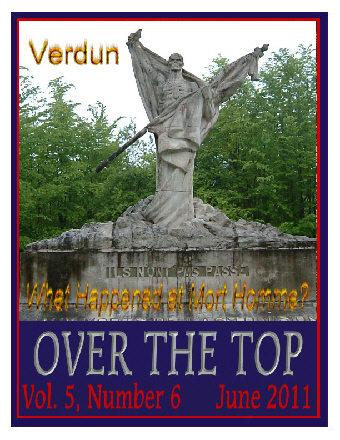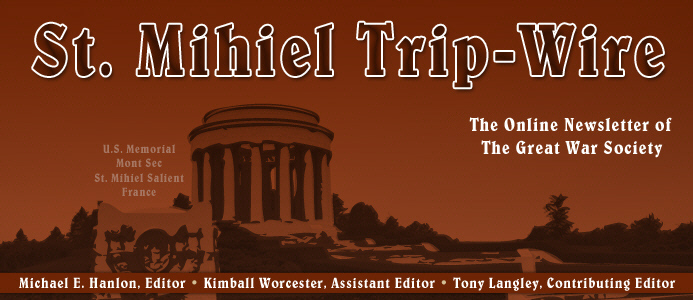

TRENCH REPORT: During my Western Front tour in May, the news of the settling up with Osama Bin Laden, naturally, dominated the news. Unfortunately, it pushed another important story off the wires (as it used to be said). Mr. Claude Choules, the last survivor of the 63 million who served in the Great War, has died. The Royal Navy veteran was a resident of Australia when he passed away. In some way, the fact that he was also the last witness to the scuttling of the High Seas Fleet at Scapa Flow provides additional punctuation to the passing of an era. (link) MH
This Month's Internet Feature
The Literary Side of the Great War
Lots of material seems to be churning up about war authors, books, plays, and such.
Review of Yet Another Book on the War Poets
New Play on the Tragic Newfoundland Regiment
Review of Novel Armistice set in Postwar London
Lawrence of Arabia Meets Lowell Thomas
Adam Hochschild's To End All Wars Reviewed by Christopher Hitchens
New at Our Own & Our Friends' Great War Websites
Click on Title or Icon to Access
|
The National Juke Box at the Library of Congress Features Many of the Favorite Songs of World War I
At Great War Society Sites
For Appreciating Memorial Day
At WFA-USA Sites
|

Learned at the Monterey Bay Aquarium in California: The demand for sardines that brought Monterey, California, to the heights of fishing productivity described by John Steinbeck in his novel Cannery Row was triggered by the loss of access to North Sea and Atlantic fisheries due to the outbreak of World War I. Coincidentally, its collapse -- now thought to have been brought about by shifting oceanographic conditions that caused 90% of the local catch to vanish in a just few years -- immediately followed World War II.
|
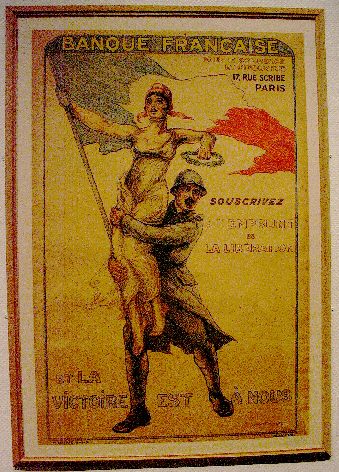
Poster from 2007 Exhibit at Les Invalides, Paris
|
GREAT WAR 2011 EVENT CALENDAR
|
A World War I Event Calendar
Download Word Document Calendar
Here
We have resumed maintaining our WWI Calendar. There is simply more information than we can display here on the Trip-Wire. We count on all of you who schedule WWI events to contact us with new and updated information.
(send an email with schedule information)
|
National World War I Seminar
The Soon to Be
World War One Historical Association presents:
War Art & the Art of War
9-10 September, 2011
Citi-Garden Hotel
South San Francisco, CA
Near S.F. International Airport
(Download Program and Registration Form)
|
Western Front Association
U.S. Branch Chapter Meetings
Check for Your Region
Regularly Updated (details)
|
Great War Society Monthly Chapter Meetings
Berkeley, San Francisco, and
Palo Alto, CA
Regularly Updated (details)
|
Upcoming Events at the National World War I Museum
Kansas City, MO
New Exhibits and Lectures Scheduled
Regularly Updated (details)
|
Send additions/corrections for our master schedule:
Email Response
|
Field Marshal Haig's 3-D Maps

This is a detail of one the three-dimensional maps used by British commanders so they could evaluate the terrain for planning future operations and for evaluating the day-to-day situation. Trench lines, artillery batteries, and ammo dumps were displayed on these in addition to the usual geographic features. Made by layering card stock to show contours of regular changes in elevation, they seem low-tech by present day standards, but they were state-of-the-art during the Great War. A set of these maps was recently restored at Sandhurst by a leading cartographer.

Great Film Opening Lines
He was the most extraordinary man I ever knew.
Lawrence of Arabia
We are at rest five miles behind the front.
All Quiet on the Western Front
Our story takes you down this shadowed path to a remote and guarded building in the English Midlands, Melbridge County Asylum. Grimly proud of its new military wing, which barely suffices in this autumn of 1918 to house the shattered minds of the war that was to end war.
Random Harvest
|
|
|
|
Page Two
|
|
|
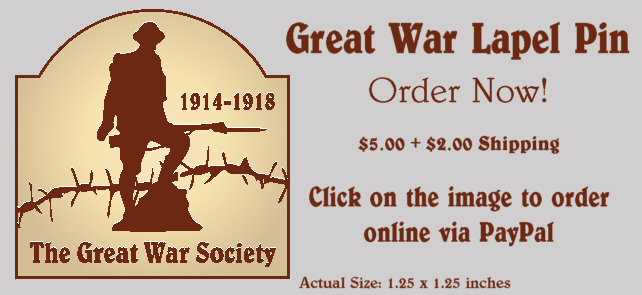 |
New Discoveries on the Western Front
We shall not cease from exploration. . .And the end of all our exploring. . .Will be to arrive where we started. . .
And know the place for the first time.T.S. Eliot, Four Quartets |
| I've been visiting the Western Front since 1989. Each time, I find something new, something I've wanted to visit but have previously managed to miss, and something that was before me earlier that I failed somehow to apprehend. These are photos of some discoveries of those kind on my 2011 Western Front tour. MH |
|
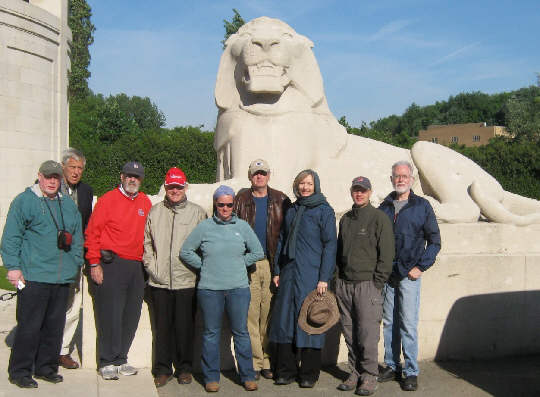
The 2011 Tour Group at Ploegsteert Wood Memorial
| I've been here a dozen times but never noticed that on of the British Lions facing "Plug Street" seems to be grinning. |
|
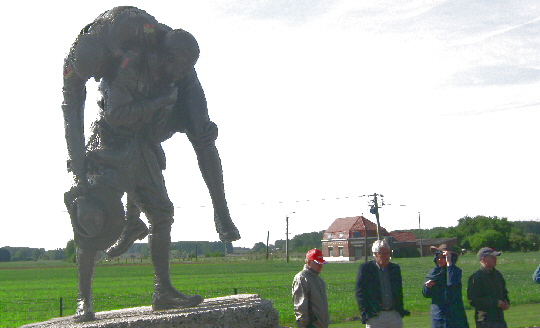
Don't Forget Me, Cobber
| We visited the Fromelles battlefield of July 1916 for the first time and discovered a number of interesting stops. There is the famous VC Corner cemetery with graves from early actions nearby, a new CWGC cemetery with the reinterred remains of the fallen from the recently discovered mass grave, a bunker where, reportedly, Adolf Hitler put in some time, and a memorial park with this statue. The depiction of a Digger carrying a fallen mate is based on the account of the Aussies combing the battlefield for their fallen wounded "cobbers", or pals. |
|
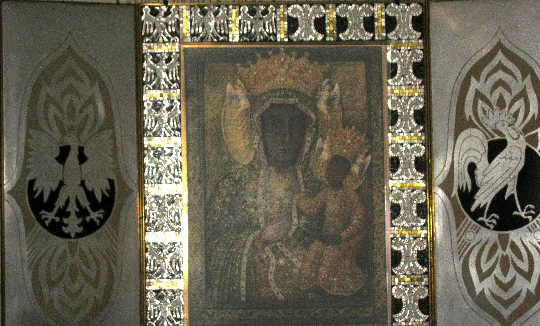
Black Madonna
| (Corrected copy from earlier version) At the chapel Notre Dame de Lorette we discovered this Black Madonna. This was a reminder that the 20th-century battlefield was, from the 18th century, the site of an oratorio, a place of pilgrimage and veneration for the Virgin. The "Black Madonnas", of which there are hundreds in Europe, according to some theories were inspired by pre-Christian earth mother/goddess archetypes, like the Egyptian goddess Isis. Some of our readers have informed me that this is an icon of our Lady of Czestochowa, national symbol of Poland. Note this Madonna is bracketed by the Polish eagle and French coq. |
|
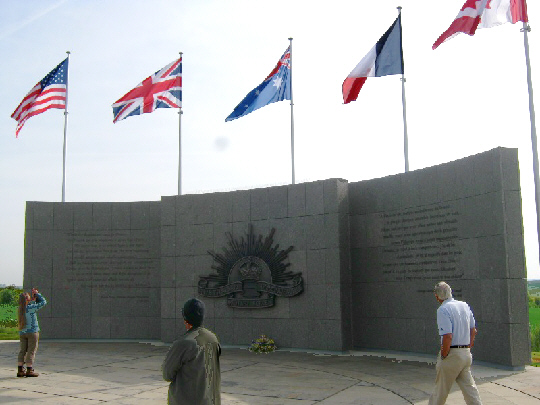
Australian Memorial at Le Hamel
| This was my first visit to the Le Hamel battlefield, east of Villers Brittenoux, since the new Australian memorial to General John Monash's 4 July 1918 masterpiece was completed. This is one of the few locations on the Western Front where an entire battlefield can be viewed at once, Blanc Mont and Fromelles being two others. The memorial also incorporates informational kiosks at key points to allow visitors to follow the course of the battle. |
|

Belloy-en-Santerre
| This is the open field where American French Legionnaire Alan Seeger met his "Rendezvous" on the afternoon of 4 July 1916. Tour member Mark Fowler gave a dramatic reading of Seeger's famous poem. Friend and Seeger researcher Frank Jordan helped me locate this site exactly. |
|
|
|
Lord of the Wings
Sir Peter Jackson, Supporter of World War I's Aviation Heritage |

Sir Peter |
One of the world's greatest supporters of World War I aviation is none other than Oscar-winning film director Sir Peter Jackson. He has a remarkable collection of WWI aircraft and exact replicas, his own aviation foundation, and is closely affiliated with the Omaka Aviation Heritage Centre near Blenheim, New Zealand, where many of his aircraft are displayed. The Heritage Centre also has a terrific Website with descriptions and high resolution photos of every specimen in the collection. Many of the aircraft and supporting items are displayed in dramatic, yet authentic, theatrical sets. Below is an example of one aircraft as described on the Omaka Website with an accompanying photo of it in situ.
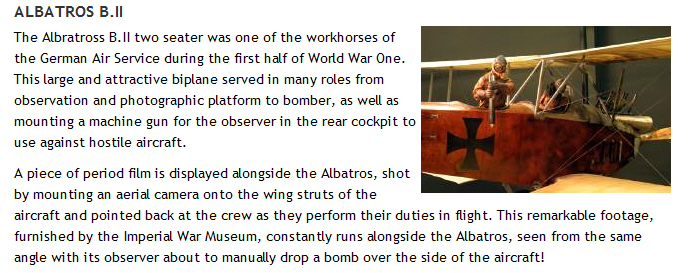
|
|
World War I Headlines
in the
21st Century
|
|

| Zeppelin over Warsaw
|
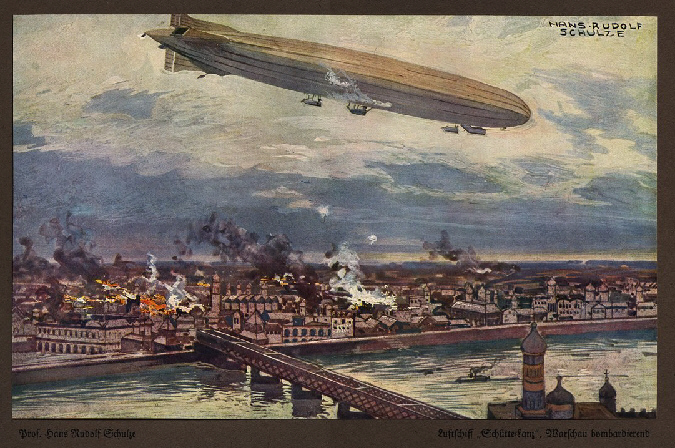
Numerous scouting and bombing missions were conducted over the city in late 1914 and early 1915.
|
Click Here to Visit the Website of Our Contributing Editor Tony Langley
War in a Different Light

|
|
Subscribe to Our Online Magazine
|
|

|
|
|
Page Three
|
|
|
Something to Think About:
Were They Simply Stupid?
|
Philip A. Crowl (1914-1991)

Kaiser Wilhelm II and Helmuth von Moltke
It is of course, to the great German strategist, Carl von Clausewitz, that we owe the first precise formulation of the concept that lies behind this question. "War is no past time," wrote Clausewitz, "it is a serious means to a serious end. . . . War . . . is an act of policy. . . . War . . . is a continuation of political activity by other means. . . . The political object is the goal, war is the means of reaching it. . . . War should never be thought of as something autonomous but always as an instrument of policy. . . . War is simply a continuation of political intercourse, with the addition of other means. . . . Its grammar, indeed, may be its own, but not its logic. ..”
So, when the possibility of war presents itself, political and military leaders must ask themselves, What specific policy objectives will be served by going to war, what specific national interests require these objectives to be pursued, and are these objectives and interests worth the price that war more often than not demands? I have said that political and military leaders must ask this question. A more appropriate word would be "should." Because often they don't, and when they don't, the end result can be disastrous.
| Professor Crowl, best known for his works on the Pacific campaign of World War II, shared these thoughts as part of the 1977 Harmon Memorial Lecture at the U.S. Air Force Academy. |
|
Let us take for example Imperial Germany in 1914. Why did the Kaiser and his advisors opt for war on two fronts against both France and Russia? Though they claimed to be victims of encirclement, the Germans stood in no clear and present danger of attack from any of their neighbors when the July crisis erupted. Their dominance in Central Europe was unchallenged; they were in essence a "satiated power.” Yet they gave their Austrian allies a "blank check" to make outrageous demands on Serbia which could only provoke Serbia's ally Russia into military action which would almost inevitably escalate into general war. Why?
The final answer has eluded historians for 60 years and more. Were the Germans powerless to hold Austria in check? Not really. Compromises over the ticklish Balkan question had been reached before and could have been reached again. Were they covetous of French and British overseas empires? Yes, but not enough to go to war over a few remote colonies in Africa and Asia. Was internal domestic discontent so worrisome to German leadership that they welcomed a war as a device to short-circuit social unrest? Some historians have suggested this as an answer but not altogether convincingly.
The answer, I am afraid, is simply that the Kaiser and his entourage and especially his military advisors were stupid. They lacked the intelligence to analyze the costs and benefits of the war on which they so blithely embarked. They neglected seriously to ask the fundamental question: What is the objective, and is it worth it?
|
|
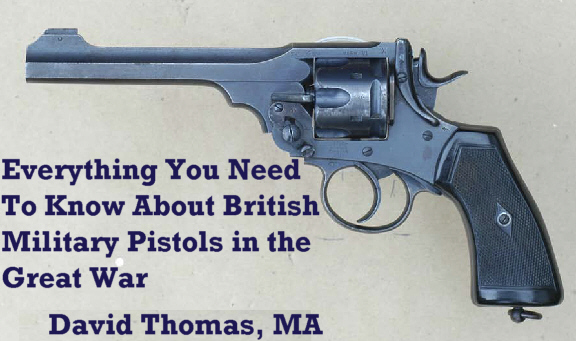
The most popular pistol issued to British forces in World War I was the .455 caliber, six round, double action Webley Mark VI revolver pictured above. In his in British First World War Studies Master's dissertation at the University of Birmingham, David Thomas discusses the selection, acquisition, use, and effectiveness of all the pistols used by His Majesty's troops during the the war. Now retired, David was commissioned from the Royal Military Academy Sandhurst into the Royal Artillery. During his subsequent career he held a variety of regimental posts, qualified as an instructor in gunnery, and worked as a weapon staff officer. He has been an enthusiast of the pistol throughut his life, as a shooter, bibliophile, and official, with a period as Chairman of the British Pistol Club. Just click on the image above to download the complete 38-page document.
|
|
|
 |
One of the Greatest War Poems,
Hodgson's Before Action
|
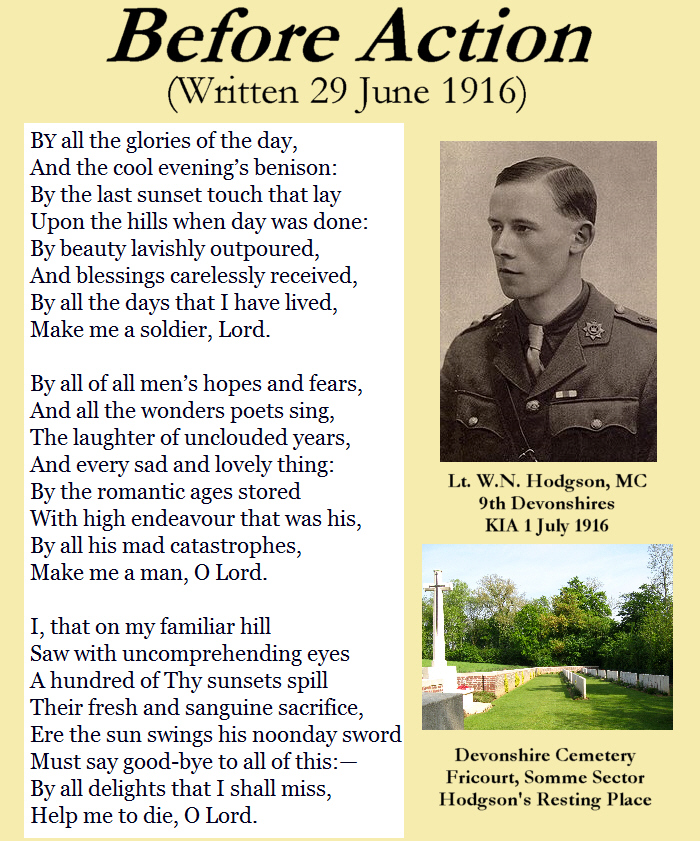
One of the "must see" stops on the Somme battlefield is Devonshire Cemetery between Fricourt and Mametz villages. On 1 July 1918 it was the location of the jump-off trench for men of the Devonshire Regiment attached to the 7th Division. They were mowed down immediately in front of the position and were subsequently buried back in the very trench where they had started out. Amongst the buried was Lt. Hodgson. Whenever I bring a tour group to the cemetery I ask one of the members to read Hodgson's great poem at his grave.
|
|











